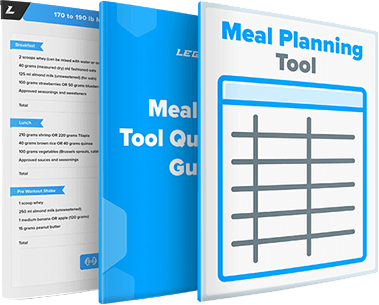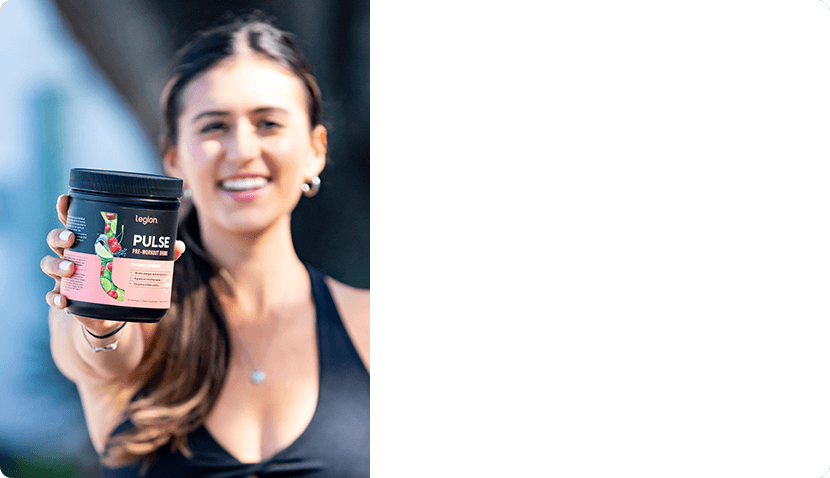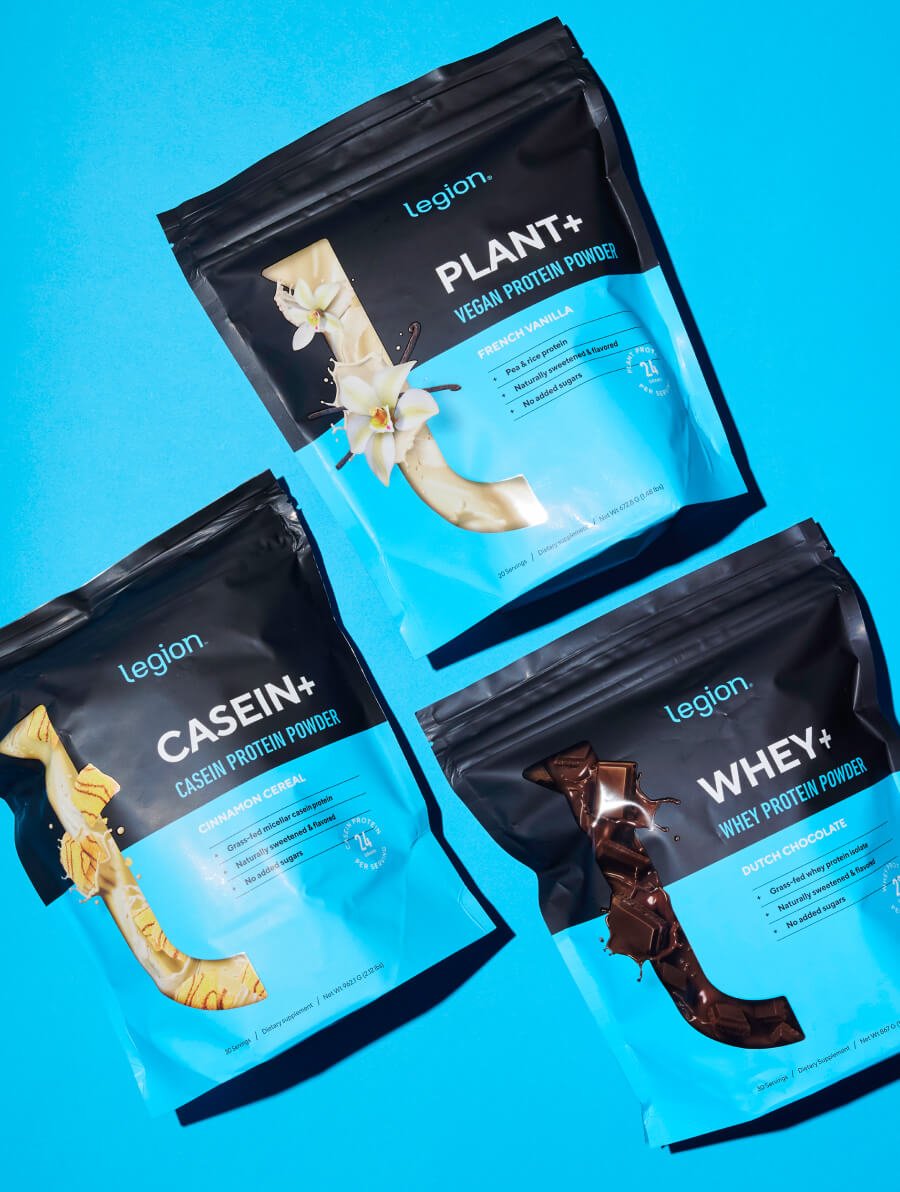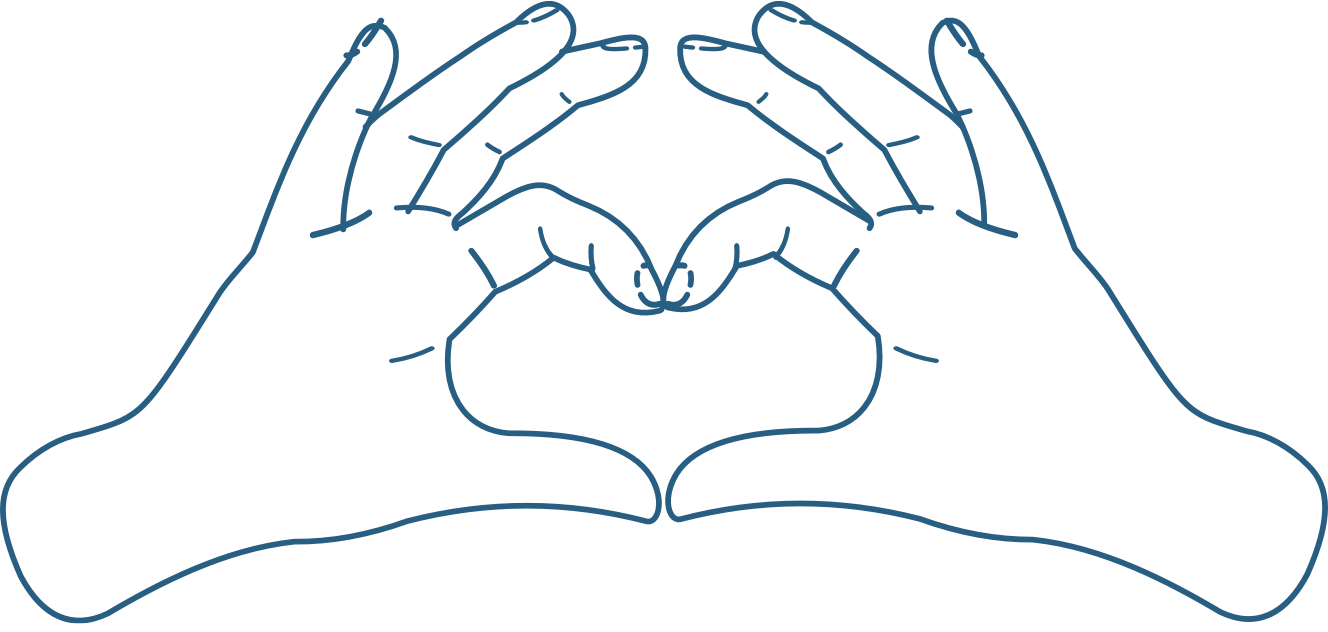Listen on Apple Podcasts | Listen on Spotify | Listen on YouTube
Weight loss can seem wildly complex.
Some say that carbs are the culprit when it comes to weight gain, and going low-carb is the most effective way to lose weight and keep it off for good.
Others say that weight loss goes beyond carbs—it’s about the quality of your diet.
If you avoid toxins, lectins, phytates, and other nutritional bogeymen that are menacing your metabolism, the pounds fall right off.
And others say that you just need to eat clean. Eat more fresh, whole, minimally processed foods and less junk, and you’ll lose weight like clockwork.
Most trends ebb and flow in cycles—liberals and conservatives in power, booms and busts in the economy, and complexity and simplicity when it comes to popular diets.
It’s not surprising then, that after several decades of fake doctors, fitness gurus, and marketers shilling complex diets like The Plant Paradox diet, the ketogenic diet, the carnivore diet, the military diet, and the like, that many people are yearning for a simpler approach.
It’s not surprising, then, that people are becoming tired of complicated diets, and are becoming more interested in simple ones, like the “calories in, calories out” diet, aka the CICO diet.
Proponents promise that it’s the simplest, most reliable, and effective way to lose weight, and that once you try it you’ll never try another weight loss diet again.
Critics say that while it can help you lose weight, it does so at the cost of your long-term health.
Who’s right?
The short answer is that the CICO diet isn’t really a diet at all. It simply describes the mechanism by which all diets work and have always worked—eating fewer calories than you burn.
As the old saying goes, though, everything old is new again, and in this podcast, you’re going to learn why the CICO diet is being exhumed once more.
By the end, you’ll know . . .
- What the CICO diet is
- Why people follow the CICO diet
- What the benefits and downsides of the CICO diet are
- A better way to eat than the CICO diet
- And more!
Let’s get started.
Mentioned on the show:
What did you think of this episode? Have anything else to share? Let me know in the comments below!
Transcript:
If you’ve been in the fitness game for any amount of time now, when you hear about a new weight loss diet, especially a weight loss diet with a name like the CICO diet, you probably assume it’s bullshit. And that’s good. You should be very skeptical of anything that you hear about nutrition, exercise.
supplementation, longevity, and really anything else related to health, fitness, and wellness. There is so much bad information out there. It is staggering. And anything related to weight loss, is particularly bad in this regard. There is a lot of money to be made in lying to people about how to lose weight faster, whether it is following a specific diet or exercise routine or supplementation regimen or a combination of all three or something else altogether.
And so that brings us to the topic at hand, which is the C I C O Diet, is it an effective weight loss diet as a work or is it just another fad that’s going to come and go like the many others that we’ve seen over the last several decades. Now, before we get to the show, if you like what I’m doing here on the podcast and elsewhere, and if you want to help me help others.
more people get into the best shape of their lives. Please do consider supporting my sports nutrition company, Legion Athletics, which produces 100 percent natural evidence based health and fitness supplements, including protein powders and protein bars, pre workout and post workout supplements, fat burners, multivitamins, joint support, and more.
Every. Gradient. And dose in every product of mine is backed by peer reviewed scientific research. Every formulation is 100 percent transparent, no proprietary blends, and everything is naturally sweetened and flavored. To check it out, just head over to LegionAthletics. com and just to show how much I appreciate my podcast peeps, use the coupon code MFL at checkout and you will save 20 percent on your entire order if it is your first purchase with us.
And if it is not your first purchase, then you will get double reward points on your entire order, which is essentially getting 10 percent cash back in rewards points. So again, that URL is LegionAthletics. com. And if you appreciate my work and if you want to see more of it, please do consider supporting me so I can keep doing what I love, like producing podcasts like this.
Hey everyone, I’m Mike Matthews and I’m going to break down what the CICO diet is. It is how it works and how to use it effectively, which means I’ve already shown my hand and revealed that the C I C O diet is an effective way to lose weight. It does work if you know how to work it. Why? C I C O stands for calories in calories out.
And so it’s not really a diet in the way many people use the word or the way many people think about the word, it refers to a fundamental law of the human metabolism that dictates What happens with your body weight that dictates weight gain, weight loss, and weight maintenance. And it’s called energy balance.
Now, energy balance is simply the relationship between the amount of energy that you are eating and you are burning. And it is expressed usually in calories. And when we’re talking about food, a calorie is the amount of energy that’s required to heat one kilogram of water one degree. Celsius, and before anyone jumps in the comments trying to correct me on my definition, use the fucking dictionary.
That is the definition. Now the reason why energy balance is so fundamental to body weight is if you are regularly consuming more energy than you’re burning more calories than you’re burning, your body stores a portion of the surplus as body fat. And then on the flip side, if you are regularly burning more energy than you are consuming.
So if you are eating fewer calories and you’re burning consistently, then your body fat stores get whittled away because your body has to get that deficit somewhere. It has to get the, let’s say it’s 500 fewer calories than it’s getting from food every day related in relationship to how many calories it’s burning.
So to put real. Numbers to it. Let’s say you’re burning 2, 500 calories per day, but you’re eating 2000 calories per day. There’s a 500 calorie deficit there to get that energy, which the body needs to get, or it would just die. Everything would just shut down. It primarily goes to body fat. So what that means is if you do that for one day, You burn 2, 500 calories, you eat 2000 calories for just one day.
You’ve actually lost a little bit of fat. It’s too little to notice, but you’ve lost a little bit of fat that day. You got a little bit leaner. And then of course, weight maintenance means that you more or less eat the amount of energy that you’re burning every day, and it’s never going to be perfect because energy expenditure is a moving target.
But really what it is over the course of a longer period of time, your average calorie intake more or less matches your average calorie expenditure. And you could look at that in terms of an individual day or even over the course of an entire week or even an entire month, that would get a bit odd.
Practically speaking, it’s most practical to look at it daily, and there are some situations where it makes sense to look at it weekly. That’s more for intermediate and advanced dieters, so to speak. Okay, so that’s energy balance. And what does that have to do with the CICO diet? All the diet really entails.
is tracking your calories in and your calories out. And if you want to lose weight, making sure that you are eating fewer calories than you’re burning on a day to day basis, and it needs to be significantly fewer. And the reason the calorie deficit needs to be fairly large is fat is very energy dense. A pound of fat contains about 3, 500 calories.
And so what that means is if you want to lose one pound of fat in a week, you have to make sure that you have eaten at least 3, 500 calories less than you have burned in that week. Now the math doesn’t work out perfectly. So practically speaking, you probably are going to have to eat anywhere from 4, 000 to maybe 4, 500 fewer calories than you burned in the week to lose a pound of fat, but you get the idea.
If you are only eating 50 calories less than you’re burning on a day to day basis, you’ll lose fat, but it’s going to be very slow. Now, the big benefit of the C I C O diet or this method or this approach of dieting is it is guaranteed to work for every single person, every single time, literally without exception.
This is the first law of thermodynamics at work. This is a fundamental mechanism of the human metabolism that is non negotiable, whether we’re talking weight loss or weight gain. And what I mean by that is, most people Even calorie skeptics would agree that you can’t egregiously overeat day after day and not get fatter, right?
Everybody knows that if you eat way too much, if you are stuffed all day because of all the food that you’re eating, you’re going to get fatter. Yes, that’s true. And that’s because of Energy balance. It’s because of calories in and calories out. If you were extremely active, you could eat all that food and not gain fat.
You might have to exercise or be physically active eight or 10 hours a day, but there is a point where you could eat all that food and not get fatter. Now, similarly, if you egregiously under ate, if you starved yourself every day, most people would agree that yeah, you do lose weight again. Even people who are skeptical about calories in calories out and energy balance, they’ve probably tried crash dieting for, they’ve probably tried starvation dieting before, and they can attest to the fact that it works.
It does work. The reason it works is energy balance. It’s cap calories in. Calories out and it works quickly because there is a big imbalance between the calories in and calories out. When you crash diet, let’s say you’re on the HCG diet and if I remember correctly, you’re supposed to eat 500 calories per day and either inject the hormone or put it under your tongue.
And what drives the weight loss there is not the hormone. Many of those. Products actually contained no hormones whatsoever. Welcome to the supplement industry. It was just the massive calorie deficit. So take a woman who was also exercising. Let’s say she’s burning 2000 calories per day, only eating 500 calories per day.
That’s 1500 calories that the body has to primarily get from body fat. And so the results come quickly. Now there are a lot of Bad things that, that happen as well, you lose muscle, you feel terrible you can run into nutritional deficiencies or at least insufficiencies. It’s not the way to go, but it does produce quick results.
And so what you do is you take that. Approach. You make it less extreme. You make it make more sense in terms of where those calories are coming in the way of protein, carbohydrate, and fat, and make sure that you are getting enough nutrition and not overdoing it in the gym. And now all of a sudden you have a great weight loss regimen.
You have something that’s healthy, sustainable, and effective. And not only that, but you also have something that’s backed by over a century Research on the human metabolism. There is no scientific debate about this anymore. Scientists are not even questioning the preeminence of energy balance. They know this is how it works.
And that’s why countless I’m talking about scores and scores, hundreds and hundreds of controlled trials. and meta analyses and research reviews have concluded that for meaningful weight loss to occur, energy in must be less than energy out for a sustained period of time or over a sustained period of time.
And this is how every weight loss diet works. Anyone who ever followed a diet That didn’t explicitly revolve around calories in and calories out. The only reason they lost weight is because one way or another, their calories in were significantly less than their calories out for long enough for meaningful weight loss to occur.
Hey, if you like what I am doing here on the podcast and elsewhere, and if you want to help me help more people get into the best shape of their lives. Their lives, please do consider supporting my sports nutrition company, Legion Athletics, which produces 100 percent natural evidence based health and fitness supplements, including protein powders and bars, pre workout and post workout supplements.
fat burners, multivitamins, joint support, and more. Every ingredient and every dose in every product is backed by peer reviewed scientific research. Every formulation is 100 percent transparent, there are no proprietary blends, and everything is naturally sweetened and flavored. To check Just head over to legionathletics.
com and just to show how much I appreciate my podcast peeps, use the coupon code MFL at checkout and you will save 20 percent on your entire order if it is your first purchase with us. And if it is not your first purchase with us, you will get double reward points on your entire order. That’s essentially 10 percent cash back in rewards points.
So again, the URL is legionathletics. com. And if you appreciate my work and want to see more of it, please do consider supporting me so I can keep doing what I love, like producing podcasts like this. Now, you might be wondering what about certain foods? What about carbs? What about sugar? What about grains?
How does that fit into the CICO diet and how does that fit into everything I’ve been talking about? None of that matters. If we’re just talking about weight loss, none of that matters. You can eat as much sugar as you want. You can eat as much carbohydrate as you want. You can eat as much bread as you want.
You can eat. So whatever you want, so long as your calories are far enough beneath your, or your calories in is far enough beneath your calories out. What you eat doesn’t matter. That however, brings me to, I wouldn’t say downsides of the CIO diet, but caveats and the caveats are, if you don’t know what you’re doing, if all, if I just left you with that and said, Hey.
Calculate, figure out go over to legionathletics. com and search for calories burning. Read the article I wrote on how many calories am I burning? Figure out approximately how many calories you’re burning every day. Eat 500 fewer calories than that every day. I don’t care what you eat. Goodbye. Have fun.
You will lose weight, but you are probably also going to end up losing muscle and there’s a fair chance you are going to develop maybe not nutritional deficiencies but insufficiencies. Now, the reason for that is you might say that you want to lose weight, but really what you mean is you want to lose fat and not muscle.
That’s the goal, right? Even if you’re not a body composition person, you’re not a fitness person or a bodybuilder or whatever, you still don’t want to lose muscle. You never want to lose muscle. That’s never good. And one of the most important nutritional components of weight loss to ensure that you preserve muscle is eating enough.
Protein, protein helps preserve muscle has been shown in a number of studies, and this is indisputable at this point, you want to be eating enough protein when you’re in a calorie deficit to make sure that you hold onto the muscle that you have. And if you are new to resistance training, And you get into that as well.
You can even gain muscle while you’re losing fat. Now, fortunately, it’s pretty easy to do. If you just get about 40 percent of your daily calories from protein, you will do fine. That’s all you got to do for most people. That’s about 0. 8 to maybe one gram of protein per pound of body weight per day. Now, if you run those numbers and you’re new to all of this stuff, you might be surprised at how much protein that is.
The thing here is, if you look at that protein intake in the context of the scientific literature, that’s not a very high protein diet. That’s a moderate to moderately high protein diet. You can find examples of studies where people are eating twice that amount. And in some cases, may even be benefiting from it.
Now that’s in the case of advanced weightlifters and bodybuilders, but there is a case to be made for some people. Certain circumstances to eat, double that amount, to eat upward of two grams of protein per pound of body weight per day. And so really this is just a matter of framing, it’s a matter of perception because the average person eats so little protein, they do not eat enough.
The average person does not eat enough protein just to help maintain muscle and strength as they get older. It’s actually unhealthy how little protein most people eat. And so when you have people who are coming from that kind of diet. Over to something like this and they start looking at what it would take to, to in many cases, it’s like double their protein intake that can feel a bit odd and even a bit overkill.
It’s not though. Again, a number of studies, including meta analyses and research reviews. So the highest and best forms of evidence that we have studies of studies where they’re taking a whole bunch of trials that have been done and putting together criteria and seeing which meet those criteria and then reviewing everything together to see what the weight of the evidence is a large body of.
Evidence has been established that eating again around 40 percent of your daily calories or around 0. 8 to 1 gram of protein per pound of body weight per day is a sweet spot for most people when they’re in a calorie deficit. Okay. The. The second caveat for the CICO diet is if you use what you’ve learned here as a license to eat a bunch of junk food, you can lose weight and you might even feel okay depending on where you’re at because for some people, if you’re overweight, losing weight is so healthy.
It has such beneficial effects in the body that those can overpower any negative effects that might be occurring from. Eating a terrible diet, but if that goes on for too long, so if you neglect fruits and vegetables and whole grains and lean proteins and healthy fats, and you just eat a bunch of Oreos and pop tarts and pizza and hamburgers and all the other tasty things that you can try to fit into your calories.
Eventually you’re not going to feel so good. Again, your body will start to develop nutritional deficiency deficiencies and insufficiencies and those are going to have ripple effects. It’s going to affect your workouts. If you’re working out, it’s going to affect your sleep. It’s going to affect your energy levels.
It’s going to affect your. Focus. It will catch up with you. Simple workaround for this is just ensure that about 80 percent of your daily calories come from relatively unprocessed nutritious foods. And those are usually the things that you make yourself again, fruits. Vegetables, whole grains, legumes, lean protein healthy fats.
A lot of the stuff that our moms probably told us to eat. If you get most of your calories from that stuff, you can then take, let’s say 20, maybe even 30 percent of your calories and use them on the junk. That is a perfectly healthy and effective and enjoyable way of going about it. And so what that means is, yes, you can have sugar every single day and lose plenty of fat and not lose muscle, maybe even gain muscle, feel good, look good.
No problem. You can’t eat a ton of sugar every day and do that. You might only be eating 10 to maybe 20 grams a day, but you can do that. And that means that, yes, you can eat carbs. Now, if you’re following my recommendations, a lot of those carbs are going to be nutritious carbs. They’re not going to be highly processed sugar laden junk.
Like for example, you might be eating, I like oatmeal, for example, it’s a kind of a go to carb for me. It’s easy to make. It’s tasty. I like fruit. Fruit is another go to carb for me. I like rice. I like beans. I like whole grain bread. I like white pita bread. I don’t like whole grain or wheat pita, but if I’m eating pita, it’s going to be white.
And I like potatoes and the list yammers on. Anyway, you get the idea. You can eat the foods that you like, including the carbs that you like, so long as they are relatively nutritious and that you are getting, let’s say. three to five servings of both fruit and vegetables per day. If you have that as your base of carbohydrates, that’s going to give you a lot of the nutrition you need.
And then you can start adding, if you want more carbs, you can start adding on top of that. So you might want to add pasta, for example, maybe you want to have four or five ounces of pasta with every dinner, or you want to have. Any of the other things that I mentioned or anything else that you might like, just start with that base of fruits and vegetables, and then start adding carbs on top of that.
And make sure you eat enough protein around 40 percent of your daily calories, 0. 8 to one gram of protein per pound of body weight per day. And if you want mega bonus points, do a lot of heavy resistance training as well, because that really is the key to ensuring you do not lose muscle. And if you’re new to it, you will gain muscle, especially if you follow a halfway decent program.
If you follow my bigger, leaner, stronger program, which I think is quite good. If you’re a guy or if you’re a gal, you’ll probably want to do thinner, leaner, stronger, because it has a bit more emphasis on the lower body than the men’s, which has a bit more emphasis on the upper body and a bit heavier weights on the men’s program than the women’s for reasons I explained in the books, bigger, leaner, stronger, and thinner, leaner, stronger.
But anyway, if you follow programs like those and you’re new to that style of training and you follow the advice that I’ve shared with you here, you will gain muscle and strength at the same time. And so if you do that, let’s say three to six months, what that means is by the end, you’re not just going to be leaner.
You are just going to look a lot better. better. You are going to see muscle definition in places where you had none. Your your clothes are going to fit better. You’re going to notice a lot more strength. You’re probably going to notice fewer aches and pains. It really is the way to go. All right. That’s it for today’s episode.
I hope You found it interesting and helpful. And if you did, and you don’t mind doing me a favor, could you please leave a quick review for the podcast on iTunes or wherever you are listening from? Because those reviews not only convince people that they should check out the show, they also increase the search visibility.
and help more people find their way to me and to the podcast and learn how to build their best body ever as well. And of course, if you want to be notified when the next episode goes live, then simply subscribe to the podcast and whatever app you’re using. To listen and you will not miss out on any of the new stuff that I have coming and last if you didn’t like something about the show, then definitely shoot me an email at Mike at muscle for life dot com and share your thoughts.
Let me know how you think I could do this better. I read every email myself and I’m always looking for constructive feedback. All right. Thanks again for listening to this episode and I hope to hear from you soon.
Scientific References +
- Kleiner SM, Bazzarre TL, Ainsworth BE. Nutritional status of nationally ranked elite bodybuilders. Int J Sport Nutr. 1994;4(1):54-69. doi:10.1123/ijsn.4.1.54
- Millan MJ, Newman-Tancredi A, Audinot V, et al. Agonist and antagonist actions of yohimbine as compared to fluparoxan at α2-adrenergic receptors (AR)s, serotonin (5-HT)(1A), 5-HT(1B), 5-HT(1D) and dopamine D2 and D3 receptors. Significance for the modulation of frontocortical monoaminergic transmission and depressive states. Synapse. 2000;35(2):79-95. doi:10.1002/(SICI)1098-2396(200002)35:2<79::AID-SYN1>3.0.CO;2-X
- Ostojic SM. Yohimbine: The effects on body composition and exercise performance in soccer players. Res Sport Med. 2006;14(4):289-299. doi:10.1080/15438620600987106
- Mora-Rodríguez R, Pallarés JG, López-Samanes Á, Ortega JF, Fernández-Elías VE. Caffeine ingestion reverses the circadian rhythm effects on neuromuscular performance in highly resistance-trained men. PLoS One. 2012;7(4):e33807. doi:10.1371/journal.pone.0033807
- Beck TW, Housh TJ, Schmidt RJ, et al. The acute effects of a caffeine-containing supplement on strength, muscular endurance, and anaerobic capabilities. J Strength Cond Res. 2006;20(3):506-510. doi:10.1519/18285.1
- Astorino TA, Rohmann RL, Firth K. Effect of caffeine ingestion on one-repetition maximum muscular strength. Eur J Appl Physiol. 2008;102(2):127-132. doi:10.1007/s00421-007-0557-x
- Goldberg AL, Etlinger JD, Coldspink DF, Jableck C. Mechanism of work-induced hypertrophy of skeletal muscle. Med Sci Sports. 1975;7(4):248-261. doi:10.1249/00005768-197500740-00003
- Huovinen HT, Hulmi JJ, Isolehto J, et al. Body composition and power performance improved after weight reduction in male athletes without hampering hormonal balance. J Strength Cond Res. 2015;29(1):29-36. doi:10.1519/JSC.0000000000000619
- Fulgoni VL. Current protein intake in America: Analysis of the National Health and Nutrition Examination Survey, 2003-2004. In: American Journal of Clinical Nutrition. Vol 87. Narnia; 2008:1554S-1557S. doi:10.1093/ajcn/87.5.1554s
- Brown JC, Harhay MO, Harhay MN. Sarcopenia and mortality among a population-based sample of community-dwelling older adults. J Cachexia Sarcopenia Muscle. 2016;7(3):290-298. doi:10.1002/jcsm.12073
- Metter EJ, Talbot LA, Schrager M, Conwit R. Skeletal muscle strength as a predictor of all-cause mortality in healthy men. Journals Gerontol - Ser A Biol Sci Med Sci. 2002;57(10):B359-B365. doi:10.1093/gerona/57.10.B359
- Krieger JW, Sitren HS, Daniels MJ, Langkamp-Henken B. Effects of variation in protein and carbohydrate intake on body mass and composition during energy restriction: A meta-regression. Am J Clin Nutr. 2006;83(2):260-274. doi:10.1093/ajcn/83.2.260
- Phillips SM, van Loon LJC. Dietary protein for athletes: From requirements to optimum adaptation. J Sports Sci. 2011;29(SUPPL. 1). doi:10.1080/02640414.2011.619204
- Paddon-Jones D, Westman E, Mattes RD, Wolfe RR, Astrup A, Westerterp-Plantenga M. Protein, weight management, and satiety. In: American Journal of Clinical Nutrition. Vol 87. ; 2008. doi:10.1093/ajcn/87.5.1558s
- Westerterp KR. Diet induced thermogenesis. Nutr Metab. 2004;1(1):5. doi:10.1186/1743-7075-1-5
- Helms ER, Aragon AA, Fitschen PJ. Evidence-based recommendations for natural bodybuilding contest preparation: Nutrition and supplementation. J Int Soc Sports Nutr. 2014;11(1):1-20. doi:10.1186/1550-2783-11-20
- Evans EM, Mojtahedi MC, Thorpe MP, Valentine RJ, Kris-Etherton PM, Layman DK. Effects of protein intake and gender on body composition changes: A randomized clinical weight loss trial. Nutr Metab. 2012;9(1):55. doi:10.1186/1743-7075-9-55
- Astrup A, Raben A, Geiker N. The role of higher protein diets in weight control and obesity-related comorbidities. Int J Obes. 2015;39(5):721-726. doi:10.1038/ijo.2014.216
- Campos-Nonato I, Hernandez L, Barquera S. Effect of a High-Protein Diet versus Standard-Protein Diet on Weight Loss and Biomarkers of Metabolic Syndrome: A Randomized Clinical Trial. Obes Facts. 2017;10(3):238-251. doi:10.1159/000471485
- Helms ER, Zinn C, Rowlands DS, Naidoo R, Cronin J. High-protein, low-fat, short-term diet results in less stress and fatigue than moderate-protein, moderate-fat diet during weight loss in male weightlifters: A pilot study. Int J Sport Nutr Exerc Metab. 2015;25(2):163-170. doi:10.1123/ijsnem.2014-0056
- Jonnalagadda SS, Benardot D, Nelson M. Energy and nutrient intakes of the United States national women’s artistic gymnastics team. Int J Sport Nutr Exerc Metab. 1998;8(4):331-344. doi:10.1123/ijsn.8.4.331
- Sandoval WM, Heyward VH. Food selection patterns of bodybuilders. Int J Sport Nutr. 1991;1(1):61-68. doi:10.1123/ijsn.1.1.61
- Koliaki C, Spinos T, Spinou Μ, Brinia Μ-E, Mitsopoulou D, Katsilambros N. Defining the Optimal Dietary Approach for Safe, Effective and Sustainable Weight Loss in Overweight and Obese Adults. Healthcare. 2018;6(3):73. doi:10.3390/healthcare6030073
- Holt SHA, Brand Miller JC, Petocz P, Farmakalidis E. A satiety index of common foods. Eur J Clin Nutr. 1995;49(9):675-690. https://www.ncbi.nlm.nih.gov/pubmed/7498104. Accessed February 9, 2020.
- Swinburn BA, Caterson I, Seidell JC, James WPT. Diet, nutrition and the prevention of excess weight gain and obesity. Public Health Nutr. 2004;7(1A):123-146. http://www.ncbi.nlm.nih.gov/pubmed/14972057. Accessed February 9, 2020.
- Hand GA, Shook RP, Paluch AE, et al. The energy balance study: The design and baseline results for a longitudinal study of energy balance. Res Q Exerc Sport. 2013;84(3):275-286. doi:10.1080/02701367.2013.816224










